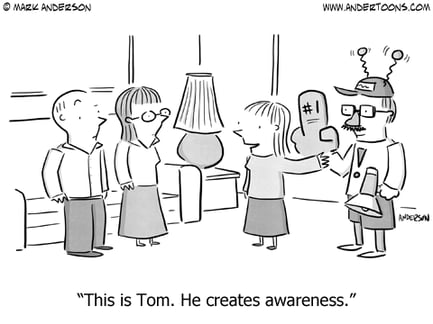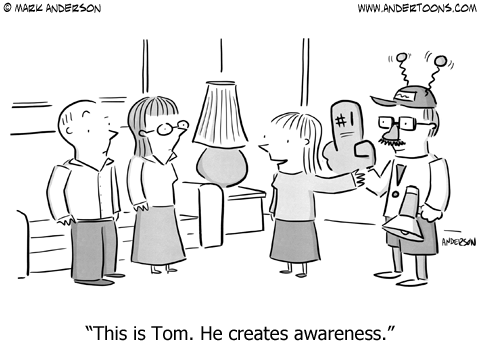
If you lack an understanding of Psychology, you have little chance of being successful in marketing. Psychology is the study of human behavior, which is primary to effective marketing. To understand people’s behavior is to understand what they want and need.
There are six interesting experiments about human behavior to help us understand the psychology of marketing.
-
Regan’s Reciprocity Experiment
Reciprocity – the idea that if I give something to you, you feel obligated to give something back to me – is a fundamental part of human nature.
Professor Dennis Regan at Cornell University experimented with two groups of subjects. The subjects were asked to rate paintings with a research assistant. The assistant left both groups in the room and returned later. The assistant came back with sodas for those in group A but returned without anything to group B, and the assistant asked both groups to buy raffle tickets. Of course, the subjects in group A were more likely to buy the raffle tickets.
In this case, those of group A wanted to buy tickets because they received something.
With an inbound marketing strategy, if you offer excellent (and relevant) content to people, they are more likely to subscribe or respond by introducing themselves. By providing interesting blog articles, they will be inspired (hopefully) to return and give excellent feedback.
-
Freedman and Fraser’s Compliance Experiment
This experiment reveals the importance of making small commitments to someone, and larger commitments later.
In 1966, Jonathan L. Freedman and Scott C. Fraser conducted an experiment called “foot-in-the-door technique.” In this experiment, housewives were called and about their household products. They were asked if they would be open to having someone come their home to look at their cleaning supplies. This experiment proves that women were more likely to accept someone to enter their home if they were first called, vs without a call.
This experiment tells you that it is important to start asking smaller request for potential customers and then make request larger. Don’t ask big request right away.
-
Kahneman’s Framing Experiment
Framing effect tells us that people will react differently to the same problem depending on how the problem is framed.
Kahneman conducted this experiment with two groups of about 600 people and told them they were infected with a deadly disease. Each group was given a different version:
In Group 1 - participants were told that with Treatment A, “200 people will be saved.” With Treatment B, there was “a one-third probability of saving all 600 lives and a two-thirds probability of saving no one.”
In Group 2 - participants were told that with Treatment A, “400 people will die.” And with Treatment B, there was “a one-third probability that no one will die and a two-thirds probability that 600 people will die.” Even though Treatment A and B were the same but framed differently, people chose the option with positive framing.
This experiment tells you how important “context” is. How you frame your products online, on a website, in social media, or even paid advertisements will affect how potential customers will respond. By conducting A/B tests, you can learn more about your customers to improve how you frame your messaging.
-
Kahneman, Knetsch, and Thaler’s Loss Aversion Experiment
This experiment shows that people’s negative feelings caused by losing something are much stronger than by the positive feelings because of any gains.
In a 1990 study, Daniel Kahneman, with colleagues Jack L. Knetsch and Richard H. Thaler, conducted an experiment with two groups, “Buyers” and “Sellers.”
Sellers were given a mug, and Buyers were given nothing.
This experiment tells us that even if products are very attractive, customers may still have anxiety about losing their money. This is especially important to remember when launching a product. Increasing the price of a product risks customers interest.
-
Zajonc’s Mere Exposure Study
This experiment tells you that the more exposure people have, the more they talk about you, your products, your companies, etc., the more people will have a positive impression.
Robert Zajonc demonstrated the power of mere exposure in a famous experiment in 1968. He had two groups of subjects and showed Chinese characters. He told them some of those characters show positive things and others show negative things.
The result: Subjects rated characters they had seen previously more positive than the characters that they have not seen.
This experiment emphasizes that to increase the power of your products, expose them to people more often. Some great examples of how to do this online are blogging, social media, email marketing, and podcasting.
-
Asch’s Conformity Experiment
In a famous 1951 experiment, Solomon Asch had a group of college students and showed lines of different lengths and asked them which line was the same length as the sample line. The answer was obvious, but he tested what would happen if the people in the group shared a different answer.
The result: Only one student changed their answer to match everyone else’s answer. This psychologic tendency is called “conformity.” Even if the truth is obvious, group pressure can override the truth.
When we think about this tendency in marketing, you will notice a very important key. The more social proof products have, the more possibility there is for others to ‘follow the crowd’ and become a customer.
The social proof might be from Twitter followers, Facebook followers, blog comments and so on. It begins by attracting attention from current customers and offering inspiring content they will share, and potential customers can follow.
To understand behavior, listen to what people tell you about what they want, need and what they don’t need. While you can inspire, motivate, and compel people to take action, you will not want to control customer’s behavior. Learning psychology will result in more positive experiences for you and your customer.
Inspired by: https://www.poweredbysearch.com/blog/psychology-of-marketing




